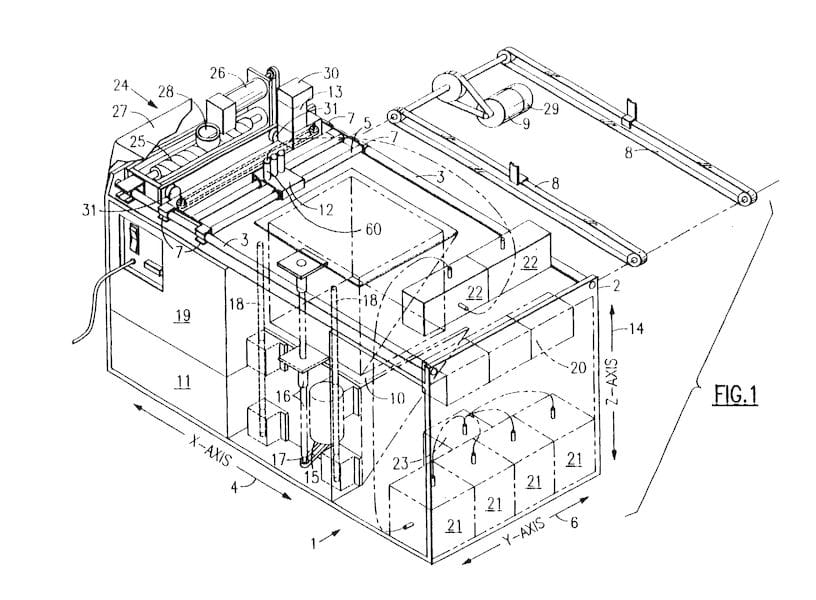
An anonymous tipster has provided the solution to last week’s Solidscape event.
If you missed it, Stratasys unexpectedly sold their subsidiary, Solidscape, to Prodways for an undisclosed amount of cash. Solidscape produces high-end wax 3D printers mainly for the jewelry industry, whereas Prodways delivers large-scale production 3D printers for industry, quite a bit different.
Our thought was that Prodways picked up Solidscape because they were angling for a way to transition smaller – but growing – jewelry manufacturers from the small scale Solidscape equipment to their larger scale Prodways products. This still makes sense.
But the mystery was why Stratasys would snip off Solidscape. My thought was originally that they wanted to focus more on large scale production applications, where they’ve been spending considerable efforts developing demonstrator machines. I suppose that still holds, but our anonymous tipster provides what might be the clearest answer yet. They say:
There is a very simple reason to consider… Stratasys-owned Solidscape’s printers were all based on these Sanders patents. Stratasys, having felt the impact of FDM patents expiry trickling away a significant portion of their industrial sales as Hobby FDM has caught up to theirs, may have anticipated the coming wave of hobbyist and import wax jet printers. The underlying tech is basic. The jewelry market has been used to paying $10-30k+ for these machines. I do not expect they will be paying that in another year or two.
This is the correct answer.
The two patents in question are:
US5506607 3-D model maker
Abstract: The 3-D Model Maker of the present invention is a device that builds three dimensional models of computer generated (e.g., CAD) structures by vector plotting layer-upon-layer applications of solidifiable substances. The layers are formed by expelling minuscule beads of the substances in liquid or flowable phase onto a platform from one or more jets, the jets and platform being relatively movable in X, Y and Z coordinate system. The beads are deposited along vectors, during X/Y relative movement, on the stage, one at a time, layer-upon-layer, to build the model. The jets and platform are moved relatively to one another in accordance with instructions from the computer (controller) to form each layer in the X-Y plane (in a manner analogous to an X-Y vector plotter) and either the stage or the jets may move in the Z direction to allow the jets to form subsequent layers.
And
US5740051 3-D model making
Abstract: A method of and apparatus for producing a 3-D model by forming a continuous plurality of parallel layers of modeling material comprising a) producing a plurality of bead producing drops of the modeling material for deposition at desired locations b) controlling the locations and timing of deposition to produce vectors, in any and all directions required to produce an outer surface defining wall of said layer with a desired surface finish; c) adjusting the distance of the location of drop production to the location of drop deposition in preparation for the formation of a subsequent said layer; and d) repeating steps a), b), and c) as required to complete the model.
Stratasys actually went through a very similar scenario years ago, when their FDM patents were expiring. At that time they held a huge portion of the market for plastic extrusion-style 3D printing, but upstarts like MakerBot and Ultimaker were gaining many fans and at one point it was debatable whether these smaller companies might take over that market.
Stratasys hedged their bets by purchasing MakerBot outright in 2013, perhaps thinking that if their own product lines didn’t survive, they could then survive with MakerBot’s equipment.
That didn’t work out very well, because it turned out that MakerBot was in some trouble internally upon the takeover, and Stratasys spent several years cleaning things up. In the meantime, other competitors caught up and more or less took over the market that MakerBot had hoped to capitalize on.
Now we see a very similar situation, where Stratasys owns some technology with expiring patents. Should they double down on the technology as they did with MakerBot? Apparently not, they seem to have learned their lesson from that experience.
But will Prodways undergo the “Stratasys Experience” with their new subsidiary, Solidscape?
I don’t think so – Solidscape is a well established company with a proven market, technology and distribution system. However, as Anonymous says, their market may crash out in a few years.
So it could be a temporary move by Prodways.
Via Google Patents and Google Patents

